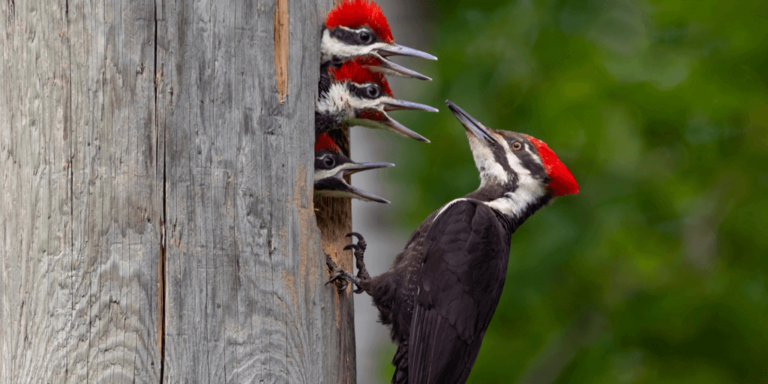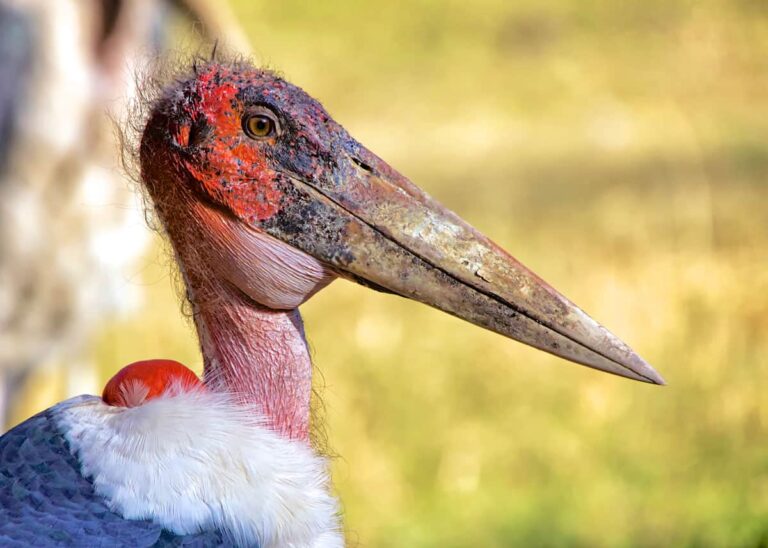Long-Tailed Tit: Habitat, Behavior, Diet, and Interesting Facts
The long-tailed tit (Aegithalos caudatus) is a fascinating small bird, easily recognizable by its distinctive long tail, tiny body, and soft plumage. Belonging to the family Aegithalidae, this charming bird is a common sight across much of Europe and parts of Asia.
Let’s explore the world of the long-tailed tit, from its scientific classification to its behavior, diet, and more.
Contents
Scientific Classification
- Kingdom: Animalia
- Phylum: Chordata
- Class: Aves
- Order: Passeriformes
- Family: Aegithalidae
- Genus: Aegithalos
- Species: Aegithalos caudatus
Physical Characteristics

The long-tailed tit is a small bird with a distinct appearance:
- Size: 13-16 cm in length, with more than half of this length being its long, narrow tail.
- Weight: Typically weighs between 7-10 grams.
- Coloration: Soft white face, with black markings on the crown and nape and light pinkish-buff flanks. The tail is predominantly black, and the wings are black with white bars.
- Tail: Its long, black tail feathers are its most striking feature, accounting for over half its body length, giving the bird an elegant silhouette.
Habitat
The long-tailed tit is found across Europe and in parts of Asia. They inhabit:
- Woodlands: Particularly favor deciduous and mixed woodlands with thick undergrowth.
- Hedgerows and Gardens: They adapt well to suburban and rural gardens, often seen foraging in shrubs and trees.
- Distribution: The species is widely spread across Europe, from the UK and Spain to Scandinavia and further east into Siberia and Japan.
Behavior
Long-tailed tits are highly sociable birds:
- Flocking Behavior: They are commonly seen in small flocks, often consisting of family groups. These flocks can include 5 to 20 individuals, and they move together while foraging.
- Communication: Their calls are high-pitched and chirpy, often used to maintain flock cohesion.
- Territoriality: While not highly territorial during most of the year, they can become more protective of their nesting sites in the breeding season.
Diet
The long-tailed tit has a diet primarily composed of:
- Insects and Spiders: During spring and summer, they mainly consume small invertebrates such as caterpillars, aphids, and spiders.
- Seeds and Berries: In the winter months, they supplement their diet with seeds, berries, and other plant material due to the scarcity of insects.
Their small beaks are perfectly adapted for picking insects from foliage and bark, allowing them to forage efficiently.
Reproduction
Long-tailed tits have fascinating nesting and reproductive behaviors:
- Breeding Season: Breeding typically takes place between March and May.
- Nest Construction: The long-tailed tit builds a domed nest out of moss, lichen, and spider silk. These nests are highly camouflaged and lined with feathers for insulation.
- Eggs: A clutch usually consists of 6 to 12 eggs, which are white with reddish-brown speckles. Both parents share the responsibility of incubating the eggs for about 14 days.
- Chick Development: After hatching, the chicks are fed by both parents and fled the nest after approximately 16-18 days.
- Helpers at the Nest: Uniquely, non-breeding individuals from previous broods or failed breeders often help feed the chicks, increasing their survival rate.
Predators
Long-tailed tits, being small birds, face predation from a variety of animals:
- Birds of Prey: Species such as sparrowhawks and kestrels target adult long-tailed tits.
- Mammals: Nesting birds and eggs are vulnerable to predators like stoats, weasels, and squirrels.
- Nest Predators: Magpies, jays, and crows also pose a threat to their nests.
The camouflage of their nests, along with group vigilance, helps reduce the impact of predation.
Conservation Status
The long-tailed tit is currently listed as Least Concern by the IUCN Red List:
- Population Trends: Their populations are generally stable, with some local fluctuations due to factors like harsh winters.
- Threats: Habitat loss, severe weather, and predation are natural threats, but there is no significant decline in their overall numbers.
Interesting Facts
- Tiny Builders: The long-tailed tit’s nest can take up to three weeks to build and contains over 1,000 feathers for insulation.
- Social Birds: They are known for their cooperative behavior, with failed breeders or young from previous years helping to raise new chicks.
- Adaptability: These birds are able to thrive in a variety of environments, from deep woodlands to urban gardens.
Evolutionary History
The long-tailed tit belongs to the family Aegithalidae, which evolved in the Palearctic region. Over time, they have adapted to different habitats, showing a range of behaviors that allow them to survive in both forested and open areas. Their long tail feathers, used for balance as they forage among twigs, are a distinctive evolutionary trait.
Relationship with Humans
Long-tailed tits are a welcome sight in gardens, often regarded fondly for their social and busy nature. Human activities do not generally threaten them, and they are frequent visitors to bird feeders, especially in winter when their natural food is scarce. Many bird enthusiasts enjoy observing their acrobatic foraging and group dynamics.
Conclusion
The long-tailed tit is a delightful bird with its distinctive long tail, social behavior, and fascinating nesting habits. Though small in size, it thrives in a variety of habitats and is well-adapted to its environment. With stable populations and a wide distribution, the long-tailed tit is a testament to the resilience and adaptability of wildlife in both natural and human-altered landscapes.
- Golden Retriever Pros and Cons: What Every Pet Parent Should Know - 15 September 2025
- Cane Corso Dog Breed: Health, Care, and Lifespan - 14 September 2025
- Catahoula Leopard Dogs: Description, Temperament, Lifespan, & Facts - 21 July 2025







